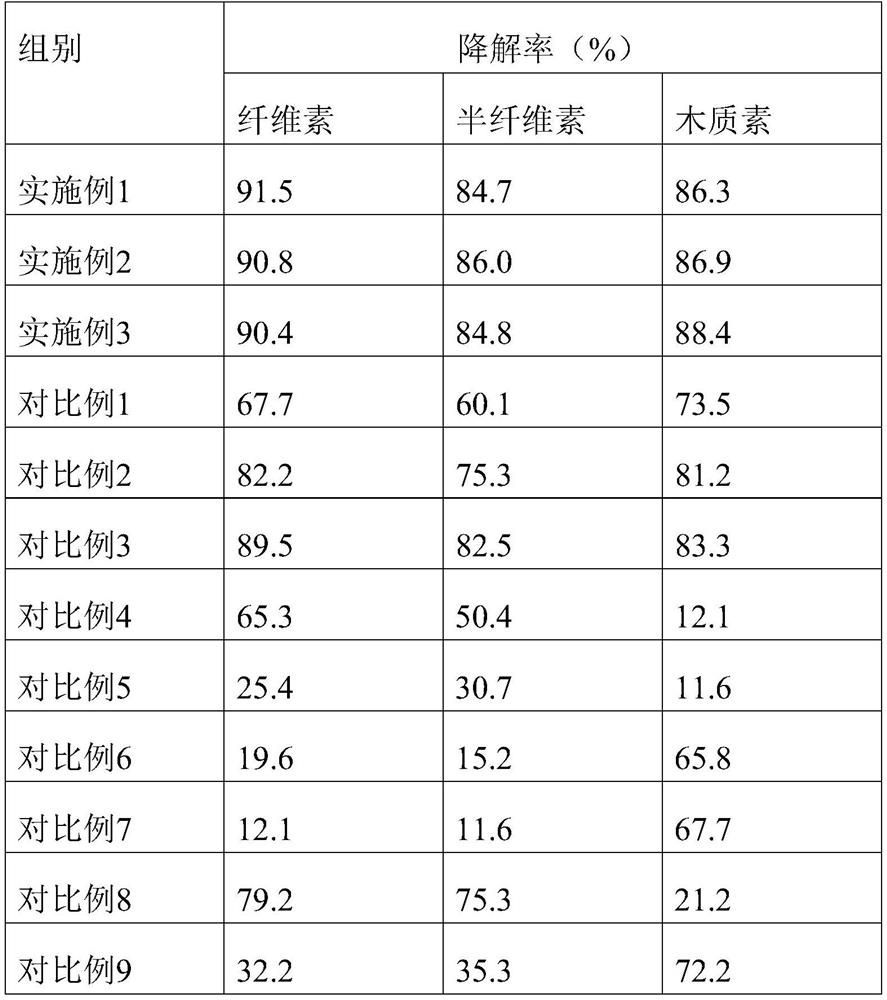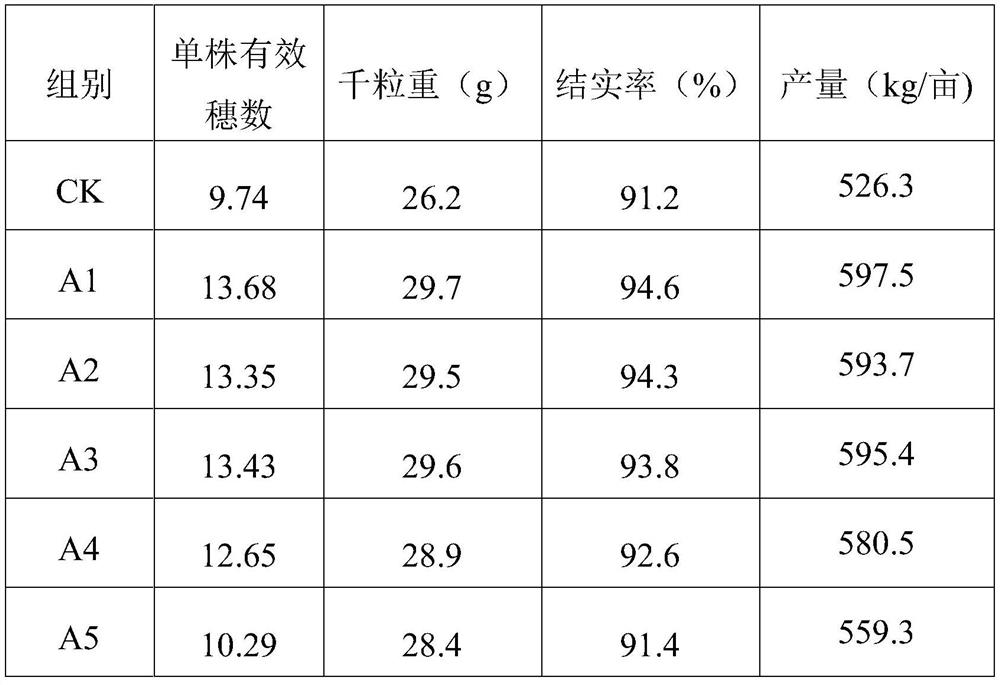Rape straw returning method
A technology of rape stalks and rapeseed, which is applied in the field of agricultural waste recycling and reuse, can solve the problems of inability to use farmland soil and slow decomposition of rape stalks, and achieve the effects of reducing soil nutrient loss, promoting straw decomposition, and reducing the amount of application
- Summary
- Abstract
- Description
- Claims
- Application Information
AI Technical Summary
Problems solved by technology
Method used
Image
Examples
Embodiment 1
[0024] (1) Rapeseed stalks are crushed into short rods less than 10cm; Ammonium bicarbonate is added with water to be mixed with an aqueous ammonium bicarbonate solution with a mass fraction of 8.5%, and then 6% surface activity of the aqueous ammonium bicarbonate solution weight is added in the aqueous ammonium bicarbonate solution The mixed solution was obtained by using a surfactant, and the surfactant was compounded with sophorolipid and sodium lignin sulfonate at a mass ratio of 1.5:4; the mixed solution was sprayed on the surface of the short stalks of rapeseed, and the spraying amount was 1 time of the quality of the short stalks of rapeseed, and the short stalks of rapeseed were sprayed. The stems are piled up and compacted, covered and sealed for 5 days, and the short stems of pretreated rapeseed are obtained;
[0025] (2) in the pretreatment rape short stalk of step (1), add 4% fermented bacterial agent of pretreatment rape short stalk weight to mix and obtain the sho...
Embodiment 2
[0029] (1) Rapeseed stalks are crushed into short rods less than 10cm; ammonium bicarbonate is added with water to be mixed with ammonium bicarbonate aqueous solution with a mass fraction of 10%, and then 4% surface activity of the ammonium bicarbonate aqueous solution weight is added in the ammonium bicarbonate aqueous solution The mixed solution was obtained by using a surfactant, and the surfactant was obtained by compounding sophorolipid and sodium lignosulfonate in a mass ratio of 2:5; the mixed solution was sprayed on the surface of the short stalks of rapeseed, and the spraying amount was 0.8 times the quality of the short stalks of rapeseed, and the short stalks of rapeseed were sprayed. The rods are piled up and compacted, covered and sealed for 5 days, and the pretreated rapeseed short rods are obtained;
[0030](2) in the pretreatment rape short stalk of step (1), add 2% fermented bacterial agent of pretreatment rape short stalk weight to mix and obtain the short sta...
Embodiment 3
[0034] (1) Rapeseed stalks are crushed into short rods less than 10cm; Ammonium bicarbonate is added with water to be mixed with ammonium bicarbonate aqueous solution with a mass fraction of 9%, and then 3.5% surface activity of the ammonium bicarbonate aqueous solution weight is added in the ammonium bicarbonate aqueous solution The mixed solution was obtained by using a surfactant, and the surfactant was obtained by compounding sophorolipid and sodium lignin sulfonate with a mass ratio of 1:3; the mixed solution was sprayed on the surface of the short stalks of rapeseed, and the spraying amount was 0.9 times the quality of the short stalks of rapeseed, and the short stalks of rapeseed were sprayed. The rods are piled up and compacted, covered and sealed for 7 days, and the pretreated rapeseed short rods are obtained;
[0035] (2) add 3.5% fermented bacterial agent of pretreatment rape short stalk weight in the pretreatment rape short stalk of step (1) and mix to obtain the sh...
PUM
 Login to View More
Login to View More Abstract
Description
Claims
Application Information
 Login to View More
Login to View More - R&D
- Intellectual Property
- Life Sciences
- Materials
- Tech Scout
- Unparalleled Data Quality
- Higher Quality Content
- 60% Fewer Hallucinations
Browse by: Latest US Patents, China's latest patents, Technical Efficacy Thesaurus, Application Domain, Technology Topic, Popular Technical Reports.
© 2025 PatSnap. All rights reserved.Legal|Privacy policy|Modern Slavery Act Transparency Statement|Sitemap|About US| Contact US: help@patsnap.com



